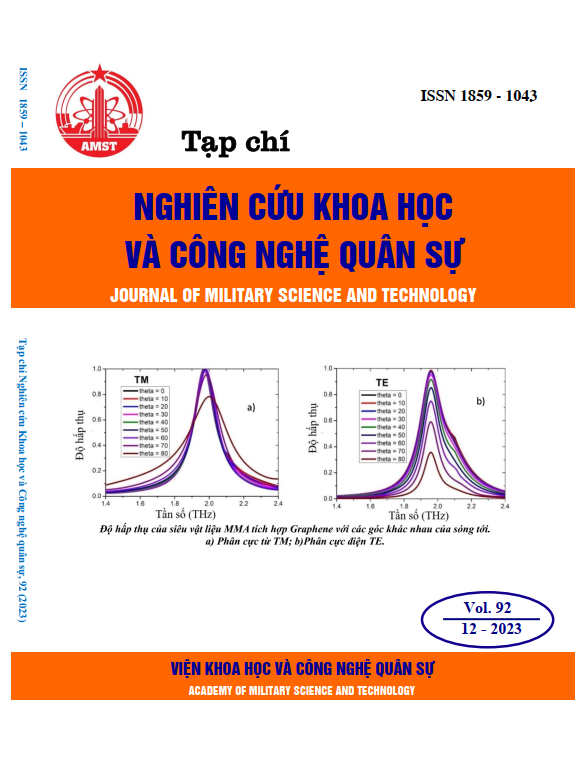Research and fabrication of high hardness one component dipping paint based on maleicized tung oil and epoxy resin
359 viewsDOI:
https://doi.org/10.54939/1859-1043.j.mst.92.2023.100-106Keywords:
Maleicization; Solid epoxy resin; Polymer coating.Abstract
This work presented the fabrication of dipping paint with high hardness based on solid epoxy resin and maleicized tung oil used for protection of small caliber bullets. The influences of temperature, maleicized time, components ratios on the properties of the prepared paint were investigated in detail. The results showed that the optimal maleicization conditions of tung oil were: Maleic anhydride content of 20%, temperature of 230 oC, reaction time of 4 hours, and maleicized tung oil/epoxy resin ratio of 1,5/10 (by weight). The prepared paint was of a non-volatile matter content of 20 ÷ 23%, complete drying time at 150 °C of 1 hour; adhesion point of 1, impact strength of 50 kG.cm, and flexural strength of 2 mm.
References
[1]. Phan Nguyên Thiệu, Khổng Đình Tuy, Nguyễn Trường Sinh, Trương Tư Hiếu, “Trang bị điển hình vũ khí tổng hợp”, NXB Học viện Kỹ thuật Quân sự, (2004).
[2]. TY 6-10-1385-78 “Технические условия - Лак ВЛ-51”.
[3]. Patent RU2313058C1, “Cartridge case and method for application of protective coating its surface”.
[4]. Patent US20120199033al, “Coated ammunition and methods of making.”
[5]. Nguyễn Việt Bắc, “Nghiên cứu chế tạo sơn điện di và công nghệ tạo màng sơn điện di bảo vệ kim loại từ dầu thực vật Việt Nam”, Báo cáo khoa học đề tài cấp Nhà nước, (1993).
[6]. Phạm Như Hoàn, “Nghiên cứu chế tạo sơn có hàm tro thấp, độ cứng và độ bám dính cao với gang cầu ứng dụng để sơn bảo quản đai định tâm của đạn cối và đạn OГ- 9”, Báo cáo khoa học đề tài cấp Viện Hóa học - Vật liệu, (2014).
[7]. Francesco Lanero, Bianca Maria Bresolin, Anna Scettri, Marco Nogarole, Elisabetta Schievano, Stefano Mammi, Giacomo Saielli, Alessia Famengo, Alessandra Semenzato, Giovanni Tafuro, Paolo Sgarbossa and Roberta Bertani, “Activation of Vegetable Oils by Reaction with Maleic Anhydride as a Renewable Source in Chemical Processes: New Experimental and Computational NMR Evidence”, Molecules, 27, 8142, (2022). DOI: https://doi.org/10.3390/molecules27238142
[8]. A.Ф. Сοрοкин Л.Г. Шοдэ, Э.А. Кοчнοва. “Химия и технοлοгия плёнкοοбразующих веществ”, Химия, М. (1981).
[9]. Байбаева С.Т., Миркинд Л.А., Крылова Л.П. “Методы анализа лакокрасочных материалов. Справочное пособие”. М. Химия. 472 с, 114-115, (1974).
[10]. Lê Hoài Anh. “Nghiên cứu chế tạo vật liệu compozit epoxy đóng rắn bằng anhydrit lỏng gia cường sợi Kevlar”. Luận án tiến sỹ Hóa học, Học viện Kỹ thuật Quân sự Bộ Quốc phòng, (2011).







